

|
Los Alamosby Philip Greenspun |
Home : Travel : Footsteps : One Section
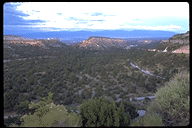 The romance of working at the place where Big Science was born never
wore off. Even though my lack of clearance kept me "outside the
fence" within which the bomb physics staff toiled, I couldn't forget
that the world never thought about science the same way after Los
Alamos. Before the Manhattan Project, it wouldn't have occurred to
anyone that simply throwing money and brains at a scientific problem
would be enough to solve it. Science proceeded at its own pace,
largely through serendipity. That the greatest war in history could
be ended by assembling a bunch of eggheads and feeding them 2% of GNP
for a couple of years gave the world faith in government-funded
science.
The romance of working at the place where Big Science was born never
wore off. Even though my lack of clearance kept me "outside the
fence" within which the bomb physics staff toiled, I couldn't forget
that the world never thought about science the same way after Los
Alamos. Before the Manhattan Project, it wouldn't have occurred to
anyone that simply throwing money and brains at a scientific problem
would be enough to solve it. Science proceeded at its own pace,
largely through serendipity. That the greatest war in history could
be ended by assembling a bunch of eggheads and feeding them 2% of GNP
for a couple of years gave the world faith in government-funded
science.
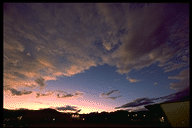 Echoes of the achievement at Los Alamos resonated through public
debate through the 50s and 60s. Nobody would have proposed going to
the moon had not the Manhattan Project succeeded. Even most of our
grand social projects were partly inspired by the physicists and
engineers of Los Alamos. Americans were the first to get the Big
Science religion from Los Alamos and are probably going to be the last
to lose it in this day and age when problems seem beyond scientists.
For example, you won't see a group of Belgians demonstrating in the
streets bitterly complaining that their government isn't spending
enough on AIDS research. It isn't ingrained in their psyche that the
government is capable of knocking over specific scientific problems
merely by allocating funds. Yet in America, we still think that we
can beat Nature if only we are willing to devote enough money and
brain power.
Echoes of the achievement at Los Alamos resonated through public
debate through the 50s and 60s. Nobody would have proposed going to
the moon had not the Manhattan Project succeeded. Even most of our
grand social projects were partly inspired by the physicists and
engineers of Los Alamos. Americans were the first to get the Big
Science religion from Los Alamos and are probably going to be the last
to lose it in this day and age when problems seem beyond scientists.
For example, you won't see a group of Belgians demonstrating in the
streets bitterly complaining that their government isn't spending
enough on AIDS research. It isn't ingrained in their psyche that the
government is capable of knocking over specific scientific problems
merely by allocating funds. Yet in America, we still think that we
can beat Nature if only we are willing to devote enough money and
brain power.
So much for Los Alamos National Laboratory as part of the Collective Unconscious. Day to day, the Lab was probably the most supportive place I've ever been when it comes to getting work done. Your project is important and the place runs on a wartime footing. Think a piece of equipment will speed up your research? It shows up in a day or two. Think UNIX is destined to be unreliable and mysterious? Not at the Advanced Computing Laboratory, where I worked; Stephen and Jerry know as much about the Suns, Crays, and Connection Machines as the people who built them. Need a journal article? Send email or call the library and they'll send you a copy the next day. Can't wait? Drop by the comfortable library in person; it is open 24 hours.
 LANL would definitely be work-heaven for a physicist or applied
mathematician. As a computer scientist, however, I missed being at
MIT in the midst of many of the field's pioneers. Nonetheless, so
many of the new developments in computer science are being made
outside of MIT that it was refreshing to be in a place with a more
outward-looking orientation. There is a contempt for work done
outside 545 Technology Square that keeps the people inside from being
completely familiar with often relevant papers. At Los Alamos,
though, there are people who are interested in keeping up with the
entire academic world's progress in particular areas and those folks
are better able to answer questions than some of their MIT
counterparts.
LANL would definitely be work-heaven for a physicist or applied
mathematician. As a computer scientist, however, I missed being at
MIT in the midst of many of the field's pioneers. Nonetheless, so
many of the new developments in computer science are being made
outside of MIT that it was refreshing to be in a place with a more
outward-looking orientation. There is a contempt for work done
outside 545 Technology Square that keeps the people inside from being
completely familiar with often relevant papers. At Los Alamos,
though, there are people who are interested in keeping up with the
entire academic world's progress in particular areas and those folks
are better able to answer questions than some of their MIT
counterparts.
I occasionally heard grumbling about bureaucracy or DOE regulations, but as a graduate student I was almost completely isolated from both. Except for the personnel department, whenever I did have to deal with the LANL bureaucracy, it was remarkably efficient, helpful, and friendly. The overhead at the Lab isn't very different from what it is at MIT, which is remarkable when you consider that MIT doesn't have to maintain hundreds of miles of barbed-wire fence and enough guards and heavy guns to repel the entire PLO.
Social adjustment was another matter. I'd been so completely happy with life on the road the previous summer (writing Travels with Samantha ) that I assumed being in New Mexico would be easy. Moving and traveling are very different though. When traveling, I didn't expect to have a social life or friends in every town. One week after moving to Los Alamos, though, something inside me decided that I was a social failure if I didn't have a dinner invitation every night as I did back in Boston.
This might have been a serious problem if I'd lived in Santa Fe. Time and time again people complained about how unfriendly the town was.
"I had lots of friends back in New Jersey. But I've been here for two years and people don't really even meet my eye on the street," was a typical lament.
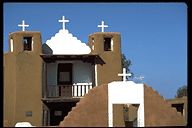
![]() Hispanics and Indians didn't seem to have much trouble, with their
relaxed lifestyle and large extended families, so I decided that the
main problem was that it was difficult to be a work-obsessed yuppie
and still feel that one had a rich social life as might be possible in
the East or in LA.
Hispanics and Indians didn't seem to have much trouble, with their
relaxed lifestyle and large extended families, so I decided that the
main problem was that it was difficult to be a work-obsessed yuppie
and still feel that one had a rich social life as might be possible in
the East or in LA.
If Santa Fe would have been tough, my choice of housing brought me close to despair for the first month or two. The Lab offered me a two-bedroom apartment to share with three other male graduate students. The $168/month price didn't upset me, but my vision of what the bathroom and kitchen would look like after a month did. I settled down in a two-man dome tent in the National Forest two miles from my office.
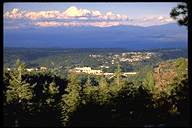 Practically speaking, this was ideal. I'd wake up every morning in a
quiet pine forest to brilliant sunshine, maybe a deer or two, and a
view out over the mesa to the Sangre de Cristo Mountains 30 miles to
the east. It took me three minutes to drive from my tent to the
Wellness Center. Although free, this is nicer and less crowded than
99% of commercial health clubs. Weight machines bore me to tears, but
when they were a 15-second detour from the shower, I couldn't regard
my wimpy musculature with complacency. After working out and chatting
with the Pueblo Indians and Hispanics that make up the security force,
I'd shower with LANL-provided soap and shampoo before rolling two more
blocks downhill for a breakfast at the remarkably good cafeteria.
Practically speaking, this was ideal. I'd wake up every morning in a
quiet pine forest to brilliant sunshine, maybe a deer or two, and a
view out over the mesa to the Sangre de Cristo Mountains 30 miles to
the east. It took me three minutes to drive from my tent to the
Wellness Center. Although free, this is nicer and less crowded than
99% of commercial health clubs. Weight machines bore me to tears, but
when they were a 15-second detour from the shower, I couldn't regard
my wimpy musculature with complacency. After working out and chatting
with the Pueblo Indians and Hispanics that make up the security force,
I'd shower with LANL-provided soap and shampoo before rolling two more
blocks downhill for a breakfast at the remarkably good cafeteria.
Mornings were great, but the evenings were terrifying. I'd sit in my office from 5 pm to midnight alone every night before driving up the hill to my tent. My social life was centered around the town of Los Alamos, which can be the loneliest community of 10,000 in the world.
Before I showed up, I figured the town and the lab would contain a random sampling of the technical elite. That was true during World War II when the lab sucked in every available physicist and engineer in the nation. I hadn't been there long before I realized that a process of self selection obtains here. Consider the thoughts of a graduating PhD physicist.
"Let's see... I've got my PhD and I want to move to a state where I'll be left alone. That means Alaska, Montana, New Mexico, or Wyoming. I don't want to have to talk to students so that rules out universities. Maybe I could even find a job where it would be illegal for me to talk to more than 1000 other people worldwide. Say, that pretty much narrows it down to Los Alamos."
Once our exceptionally anti-social scientist decides to work at the Lab, he is faced with another decision: live up on the hill with the rest of the people who like to keep to themselves or commute from Santa Fe where he'll waste 90 minutes or two hours every day in the car and possibly get sucked into art gallery openings.
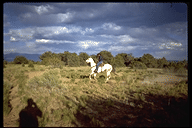 The result of this self selection is a town where you seldom hear the
word "dinner party." People like to come into work at 9, think alone
in their offices, bore each other to death at the occasional meeting,
and go home to wifey at 5. When you ask about recreation, it is
invariably a solitary outdoor pursuit or maybe going out to dinner
with the wife. I can count the number of deep conversations I had
with Los Alamos residents on the fingers of one hand. After lunch
with a Harvard geologist who'd been through GET training with me, I
said "Jerry, this was a really good discussion. I'm so glad to
finally connect with someone who both works and lives up here."
The result of this self selection is a town where you seldom hear the
word "dinner party." People like to come into work at 9, think alone
in their offices, bore each other to death at the occasional meeting,
and go home to wifey at 5. When you ask about recreation, it is
invariably a solitary outdoor pursuit or maybe going out to dinner
with the wife. I can count the number of deep conversations I had
with Los Alamos residents on the fingers of one hand. After lunch
with a Harvard geologist who'd been through GET training with me, I
said "Jerry, this was a really good discussion. I'm so glad to
finally connect with someone who both works and lives up here."
"Philip, I don't know where you got that idea. My wife and I just built a house in Santa Fe. You couldn't pay us to live up here in Los Alamos."
On one of my summer mountain bike excursions, I stopped to talk with a woman who lived in White Rock, a satellite town of 8,000 that makes Los Alamos look positively cosmopolitan. Now that her kids were grown, didn't she mind living in White Rock with just her husband?
"Oh, we moved here a couple of years ago because we like the outdoors and the West. White Rock is great. Of course, you recognize everyone because you see them every day at the Lab or in the supermarket, but people create their own sense of privacy by not saying `hello' even if they've seen you a hundred times before."
Not everyone adapts so well. One graduate student described his fellow young physicists as "the healthiest group of alcoholics in the world. These guys drink half a bottle of whiskey every night at a bar, then get up at 7 am and bike 30 miles up a mountain before coming into work."
Marital problems are conspicuous in such a small community. The most likely "co-respondent" in a divorce is a neighbor and fellow Lab employee. One local woman married her first Lab employee at age 19 and then married three more in succession, each time moving up the organization chart. She's 45 now and divorced from a deputy director.
"What I hate about people in this town is that they don't understand wife swapping," noted a 20-year Lab employee. "You aren't supposed to keep the other guy's wife! One guy in my neighborhood was down in Espanola and some Hispanic teenager stole his 357 Magnum out of his car. Like an idiot, he chases after the kid and the kid shoots him with his own pistol. He's in the hospital recuperating for six months and in the meantime his wife starts an affair with his neighbor across the street. When he gets out of the hospital, his wife marries the neighbor and he marries the neighbor's discarded wife."
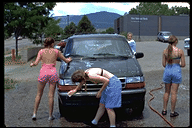 Not everything about the town is bad, though, especially if you are a
middle class Midwestern white person. This is your ideal version of
New Mexico. You've got the best climate and scenery in the state for
starters. Adobe? "Living in the dirt is for animals; our houses and
businesses would look right at home back in Missouri." Mexican food?
"We'll take real American food, thank you very much: Pizza Hut,
McDonald's, a diner, a few Chinese restaurants, and one semi-upscale
place for taking out interviewees." Hispanics? "Thank you but we can
live without their violent crime and illiteracy (we'll let them take
the grunge jobs at the Lab, though, especially because it will make
our affirmative action program look successful). Indians? "We have a
tough time telling them apart from the Hispanics; besides, they like
to stick to their pueblos." Rich people from Los Angeles making us
sick by building million-dollar houses and driving around in $100,000
BMWs? "They can stay in the Santa Fe hills."
Not everything about the town is bad, though, especially if you are a
middle class Midwestern white person. This is your ideal version of
New Mexico. You've got the best climate and scenery in the state for
starters. Adobe? "Living in the dirt is for animals; our houses and
businesses would look right at home back in Missouri." Mexican food?
"We'll take real American food, thank you very much: Pizza Hut,
McDonald's, a diner, a few Chinese restaurants, and one semi-upscale
place for taking out interviewees." Hispanics? "Thank you but we can
live without their violent crime and illiteracy (we'll let them take
the grunge jobs at the Lab, though, especially because it will make
our affirmative action program look successful). Indians? "We have a
tough time telling them apart from the Hispanics; besides, they like
to stick to their pueblos." Rich people from Los Angeles making us
sick by building million-dollar houses and driving around in $100,000
BMWs? "They can stay in the Santa Fe hills."
 In making New Mexico just like Kansas, Los Alamosans have been
remarkably successful. In a society where everything is criminal,
there is of course plenty of crime, e.g., teenagers drinking alcohol,
people smoking marijuana. However, there is virtually no behavior
that John Stuart Mill would have felt government had a legitimate
right to stop. Don't bother locking your car; nobody is going to
steal your Alpine radio (even if they might take your wife).
In making New Mexico just like Kansas, Los Alamosans have been
remarkably successful. In a society where everything is criminal,
there is of course plenty of crime, e.g., teenagers drinking alcohol,
people smoking marijuana. However, there is virtually no behavior
that John Stuart Mill would have felt government had a legitimate
right to stop. Don't bother locking your car; nobody is going to
steal your Alpine radio (even if they might take your wife).
Although I've come to appreciate how difficult it can be to hang onto my Alpine radio in Boston, the low crime rate wasn't my favorite thing about the town of Los Alamos. In the Me Society of the 90s where politics is all about grabbing as much as possible for oneself and voting one's pocketbook, Los Alamos stands out as a town where people cooperate and "civic virtue" is not a hollow phrase.
 You will never see a better public library, public swimming pool, or
public parks in a town of this size. Rich communities don't even do
so well because of the tendency for each member to hoarde his wealth
and spend it inside the fence around his property. The community
spirit of Los Alamos comes from the public spirit of the lab. At a
publicly-funded research university, the idea that society is supposed
to get something back for its money would be a shock to most of the
researchers. They are in it for personal glory and advancement. At a
technical company, the goal is to take as much money out of society as
possible for the least amount of effort. At the Lab, though, most of
the workers take the idea of public service seriously even if they
don't talk about it. Scientists at Los Alamos want to be leading
edge, they want to publish in journals, but ultimately they try to
deliver something of value to the society that funds them.
You will never see a better public library, public swimming pool, or
public parks in a town of this size. Rich communities don't even do
so well because of the tendency for each member to hoarde his wealth
and spend it inside the fence around his property. The community
spirit of Los Alamos comes from the public spirit of the lab. At a
publicly-funded research university, the idea that society is supposed
to get something back for its money would be a shock to most of the
researchers. They are in it for personal glory and advancement. At a
technical company, the goal is to take as much money out of society as
possible for the least amount of effort. At the Lab, though, most of
the workers take the idea of public service seriously even if they
don't talk about it. Scientists at Los Alamos want to be leading
edge, they want to publish in journals, but ultimately they try to
deliver something of value to the society that funds them.
If you like the photos above, you might also like the rest of the photos I've taken in New Mexico.